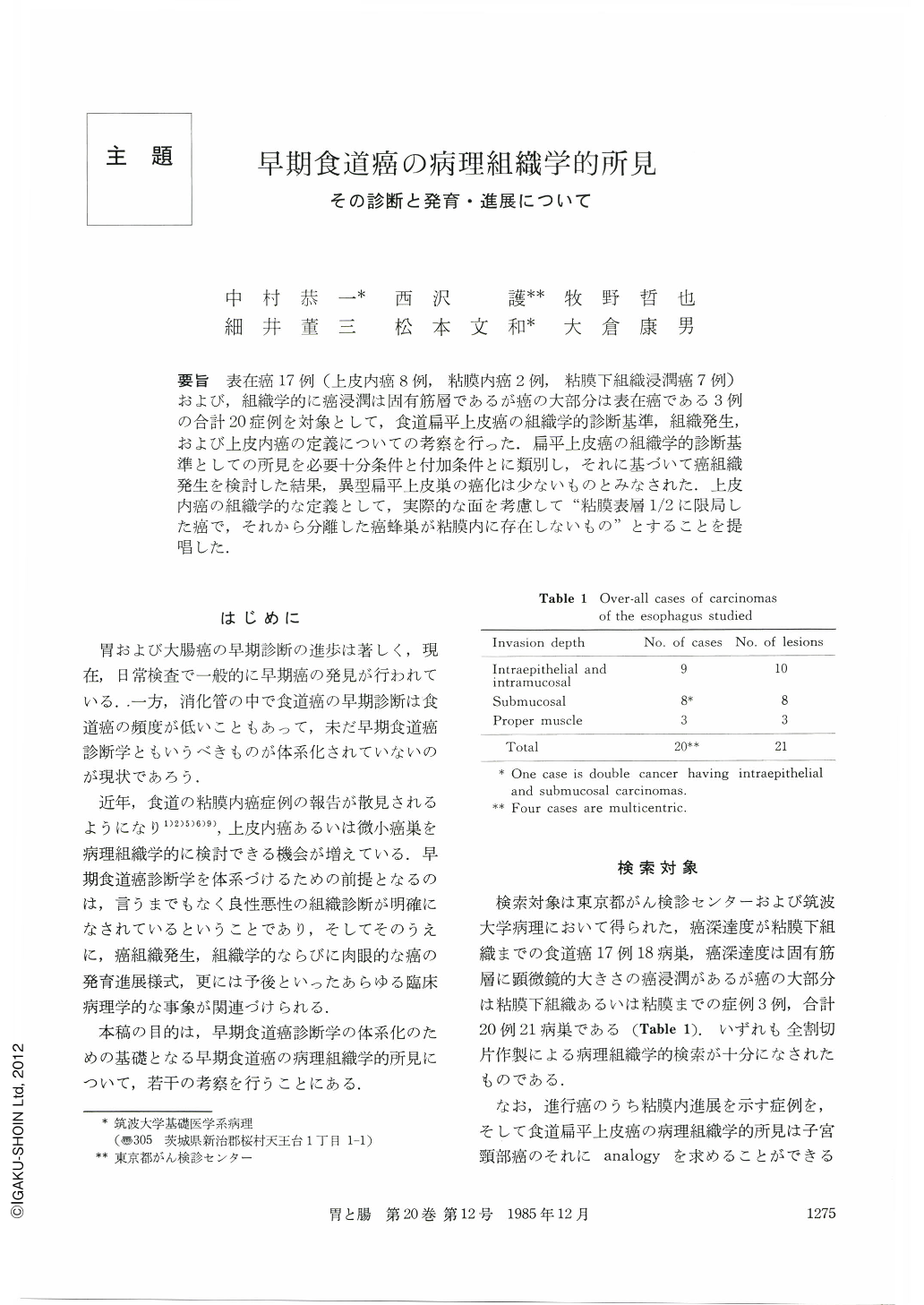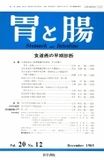Japanese
English
- 有料閲覧
- Abstract 文献概要
- 1ページ目 Look Inside
- サイト内被引用 Cited by
要旨 表在癌17例(上皮内癌8例,粘膜内癌2例,粘膜下組織浸潤癌7例)および,組織学的に癌浸潤は固有筋層であるが癌の大部分は表在癌である3例の合計20症例を対象として,食道扁平上皮癌の組織学的診断基準,組織発生,および上皮内癌の定義についての考察を行った.扁平上皮癌の組織学的診断基準としての所見を必要十分条件と付加条件とに類別し,それに基づいて癌組織発生を検討した結果,異型扁平上皮巣の癌化は少ないものとみなされた.上皮内癌の組織学的な定義として,実際的な面を考慮して“粘膜表層1/2に限局した癌で,それから分離した癌蜂巣が粘膜内に存在しないもの”とすることを提唱した.
Seventeen superficial spreading squamous carcinomas of the esophagus which consist of eight intraepithelial and two intramucosal carcinomas, and ten carcinomas microscopically infiltrating the submucosa or the proper muscle, were histologically studied on growing modes, histogenesis and histological criteria for differentiating squamous carcinoma of incipient phase from dysplasia.
Conclusions obtained from the study are as follows:
1) Oblique line or lateral invasion is very useful for diagnosing squamous carcinoma of the esophagus in incipient phase.
2) In biopsy specimen taken from a slightly elevated lesion with many tiny erosions and showing wrinkled surface, atypical squamous epithelium showing fusocellular pattern may be highly suggestive of malignancy.
3) In the squamous epithelium of the esophagus near or within ten squamous carcinoma limited to the epithelium or the mucosa, presence of dysplastic lesions was infrequent. Therefore, it may be consideyed that the major part of squamous carcinoma of the esophagus develops immediately from the squamous epithelium independently of preexisting dysplasia.

Copyright © 1985, Igaku-Shoin Ltd. All rights reserved.


